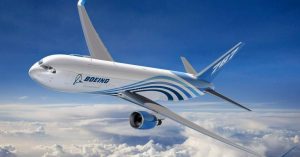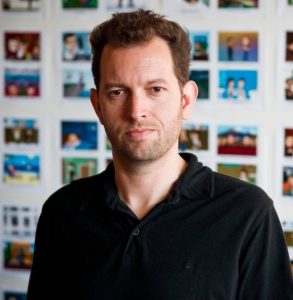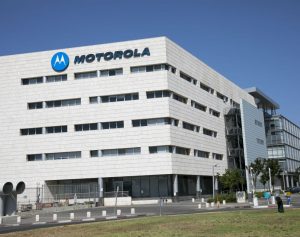The Boeing Company: 100 Years of Aviation Pioneering
The Boeing Company is one of the biggest names in the pioneering of aero products. The company derived its name from the surname of its founder William Edward Boeing, who was an American timber businessman. The company has an old history, as it was founded almost 102 years ago, on 15 July 1916, in Seattle, Washington, U.S. The founder and the former CEO of the company, William Boeing, had an immense interest in the aircrafts, which he developed when he first time saw a manned flying machine during the Alaska-Yukon-Pacific Exposition, in Seattle, in 1909.
After the incident, Boeing himself joined the Glenn L. Martin Flying School in Los Angeles to learn flying. He even purchased a plane for himself from Martin’s. The idea of manufacturing his first plane hit his mind when he was unable to get the replacement for the damaged parts of his newly purchased aircraft from Martin’s. Hence with the help of his friend Cdr. George Conrad Westervelt, he built an amphibian biplane, the B & W Seaplane.
In 1910, William Boeing bought Heath’s shipyard in Seattle, where he founded The Boeing Company, his first aeroplane factory, on July 15, 1916, with the name Pacific Aero Products Co. Before founding the company, William owned business of timber. So his experience with the wood helped him a lot in the Airplane manufacturing business.

On 9 May 1917, the company was rebranded as Boeing Airplane Company. In the same year, it shipped its first 50 aeroplanes built for the US Navy for the first world war and moved its operations to its Boeing Plant1 located in the Washington state.
In 1919, the company manufactured the Boeing B-1 flying boat, which could carry two more passengers along with the pilot. The aircraft served as the international airmail from Seattle to Victoria, British Columbia, for eight long years. By the time, Boeing started manufacturing fighter planes for the U.S. Army Air Service. The early models of its fighter planes were PW-9 fighter and the Boeing P-12/F4B fighter.
Soon, Boeing’s Model 40 mail plane started operating between San Francisco and Chicago for the U.S. government, under the U.S. Post Office’s contract. In 1927, the company launched an airline named Boeing Air Transport and manufactured its first passenger plane Boeing 80 that took its first flight on 27 July 1928. The same year, the company went through a merger with the Pacific Air Transport.
In the early 30’s Boeing emerged as a leader in the all-metal aircraft construction and built a low-wing monoplane, named as Monomail, to carry mails. The Mononmail also became the basis of the Boeing YB-9 architecture. In 1932, the company brought the first all-metal monoplane fighter, Model 248, and in the next year Model 247, a standard passenger plane.
In 1938, the company built the largest passengers airliner, the Boeing 314 Clipper, to fly on transoceanic routes, under an agreement with Pan American World Airways. The plane had a capacity of 90 passengers in the day flight and of 40 passengers in the night flight. It took its first flight in June 1938 and started operating for regular passenger service from the U.S. to the U.K.
During the world II, Boeing won a contract to build the fighter planes for the U.S. Air Force. Almost all of the aircraft manufacturing companies cooperated at building them. They hired the family members of the soldiers who had gone to the war and built a large number of B-17 and B-29 bombers. The production had gone to a level that almost 350 planes were made in every month.
In 1947, Boeing built its first jet aircraft XB-47 followed by the successful launching of B-47 and B-52 bombers. It also started building the military jets, including the B-47 Stratojet and B-52 Stratofortress, in the decade of 50s. Soon Boeing entered into the manufacturing of the intercontinental missile, using the short-range missile technology.
In the mid-50s, the company started the manufacturing of the small turbine engines and became a leader in the same. Boeing built 2,461 engines before production ceased in April 1968.
The decade of the 50s and 60s were the decades of manufacturing jetliners for Boeing. It launched the 707, 720 as well as 727 commercial jetliners in those years. The 727 was the first commercial jetliner to reach 1,000 sales. Boeing’s twin-engine 737, become the best-selling commercial jet aircraft of all times.
In the 70s, the company faced a simultaneous decline and recession in the market. But by the mid of the 80s, the economic condition of the company started to improve, and it introduced new passenger airliners, the single-aisle 757, the larger, twin-aisle 767, and upgraded versions of the 737, with larger seating capacity.
Having been a part of the Apollo project, it also participated in other space programs and became the first contractor for the International Space Station program. In 1994, Boeing came up with the most modern, i.e., typical three-class layout aircraft, the twin-engine 777, with a seating capacity of 300-370 passengers.
In early 2000, the company purchased Hughes Electronics, in order to expand into the aerospace field. Boeing became the largest provider of rocket launch services to the U.S. government, through its joint venture, United Launch Alliance, with Lockheed Martin, in late 2006. Boeing also became the prime contractors in the U.S. military’s Future Combat Systems program.
Boeing revealed its Q4 profit of the year 2013 in January 2014, that was estimated to be about US$1.23 billion. In 2017, the company had 140,800 and made a revenue of US$93,392 million.

Yashica is a Software Engineer turned Content Writer, who loves to write on social causes and expertise in writing technical stuff. She loves to watch movies and explore new places. She believes that you need to live once before you die. So experimenting with her life and career choices, she is trying to live her life to the fullest.
 and share them with their friends.
and share them with their friends.



